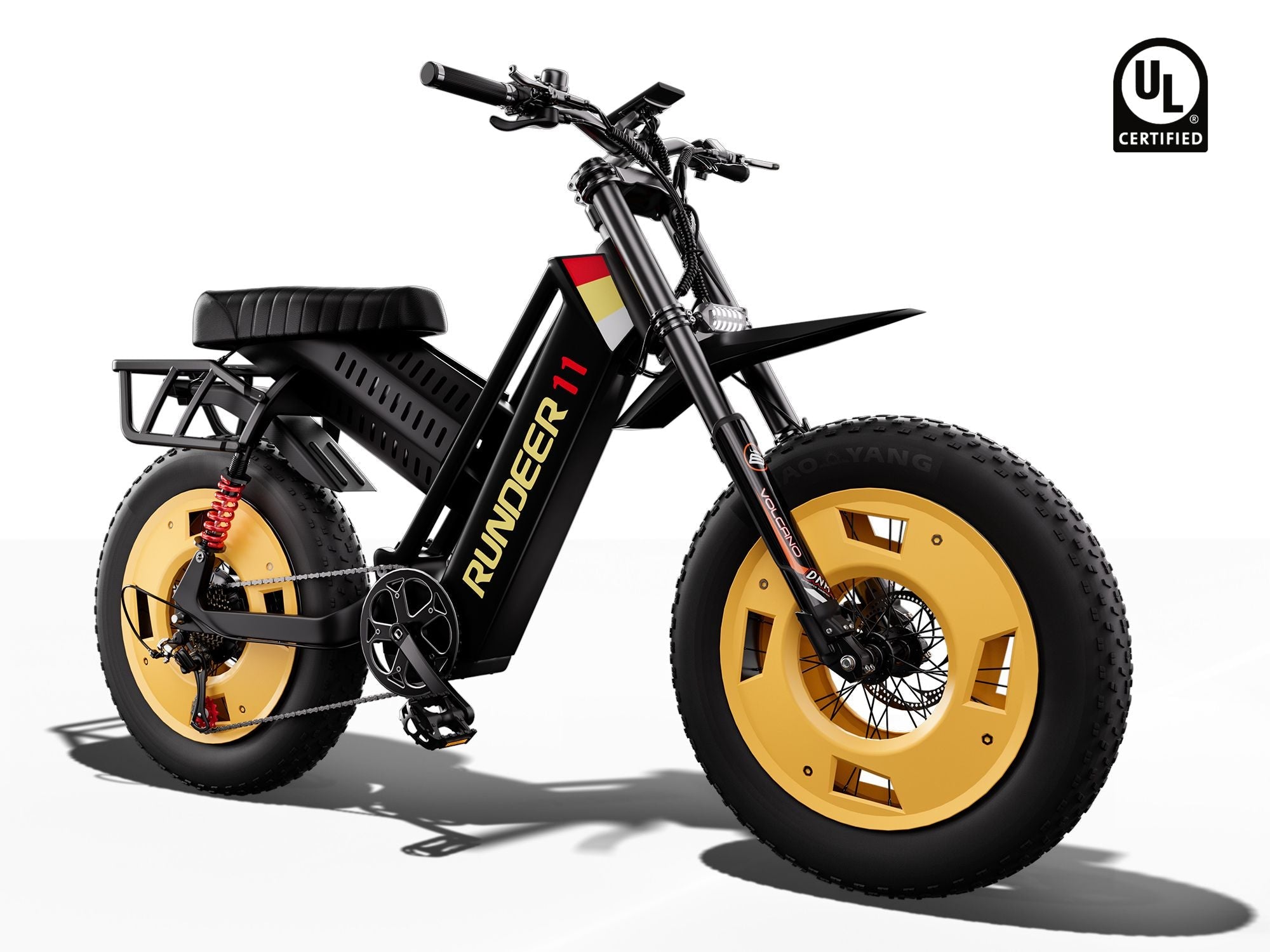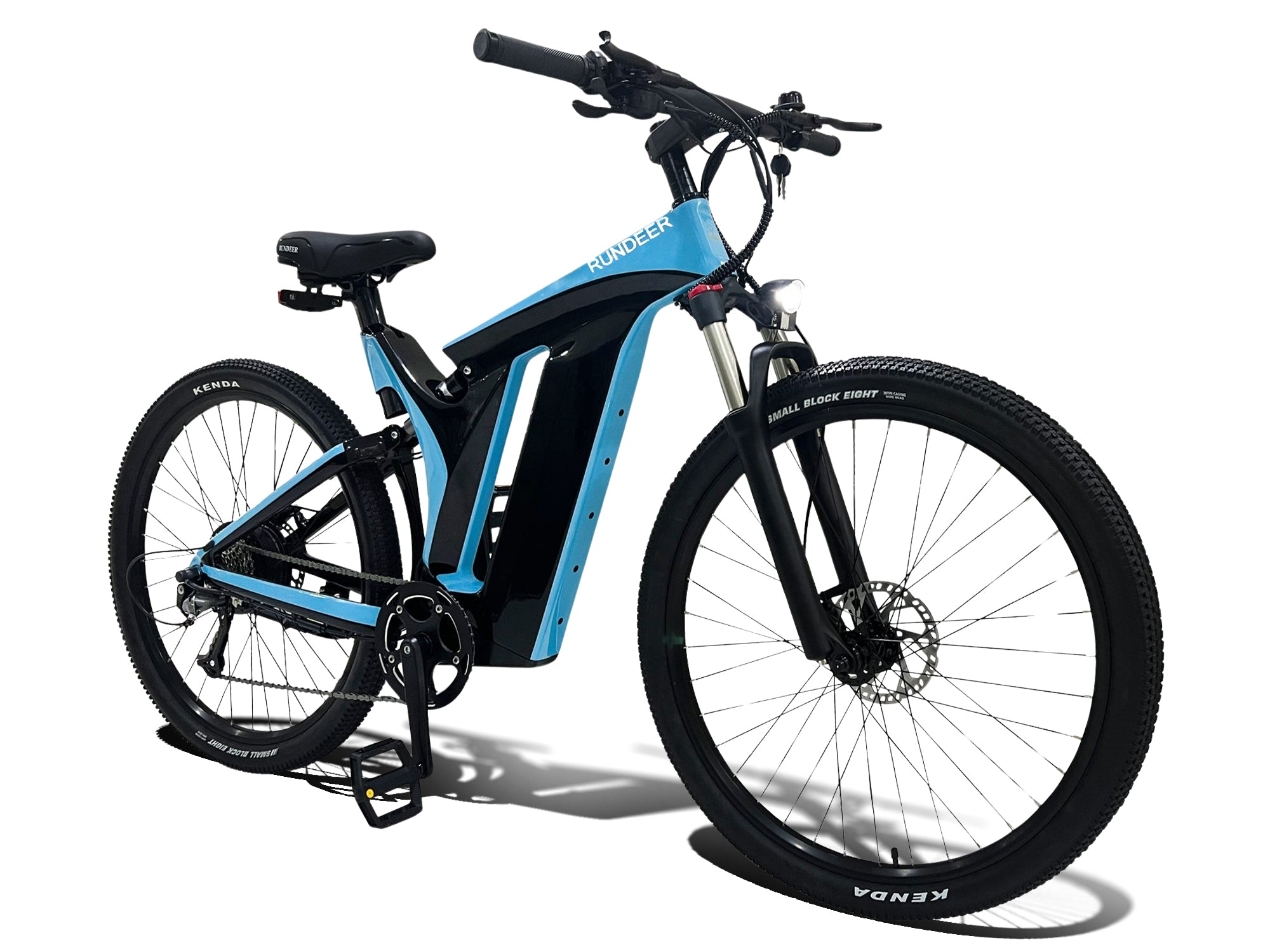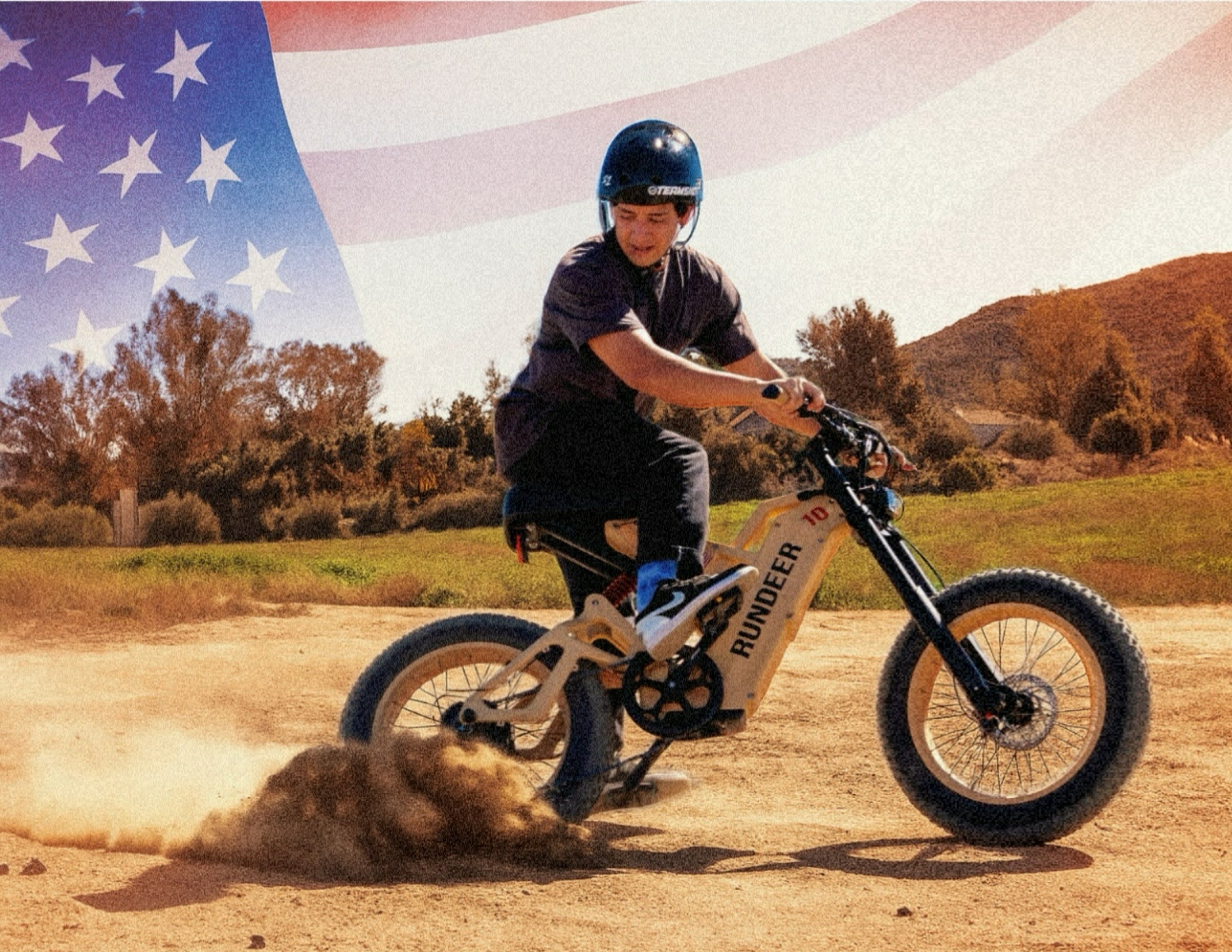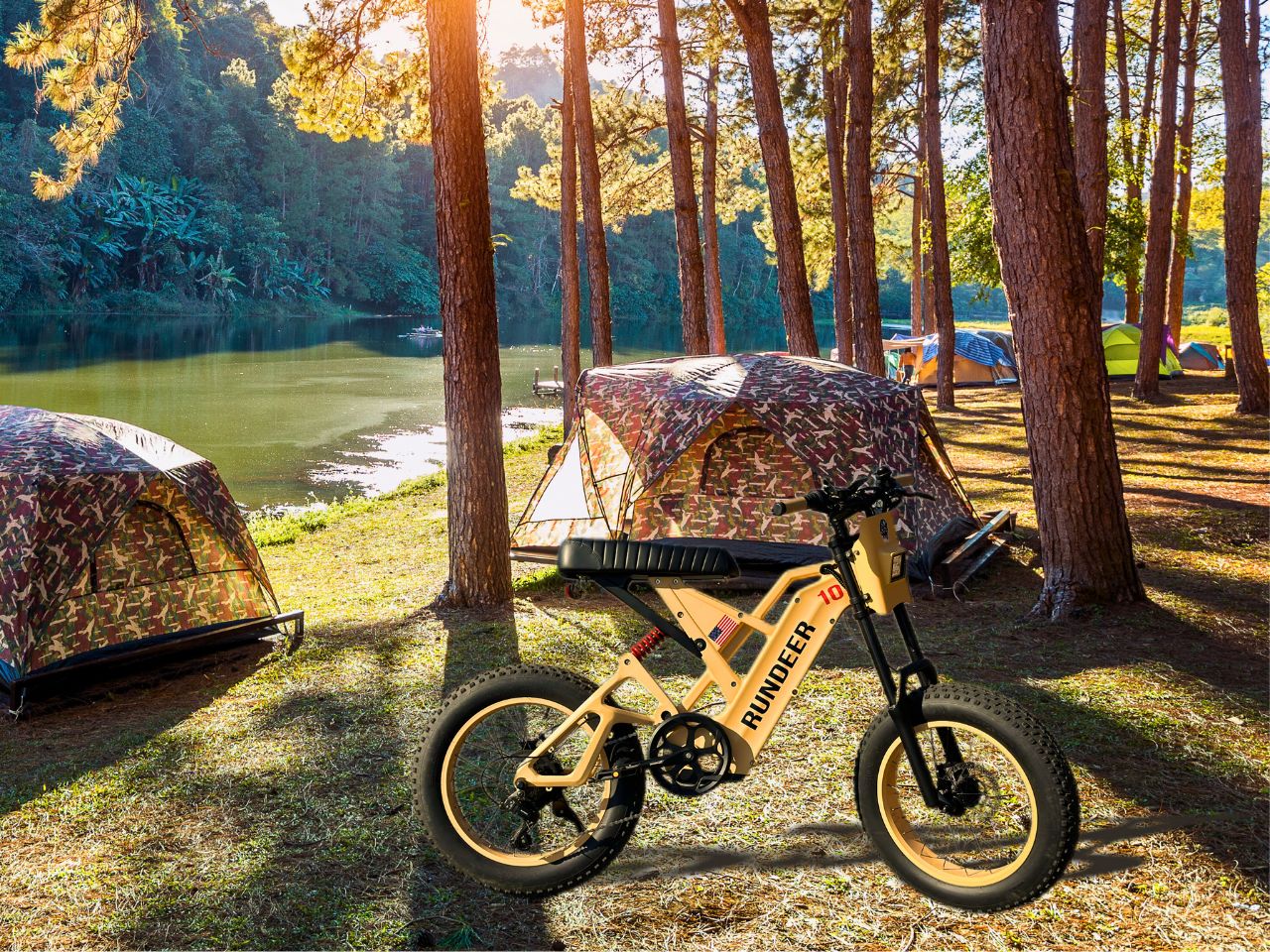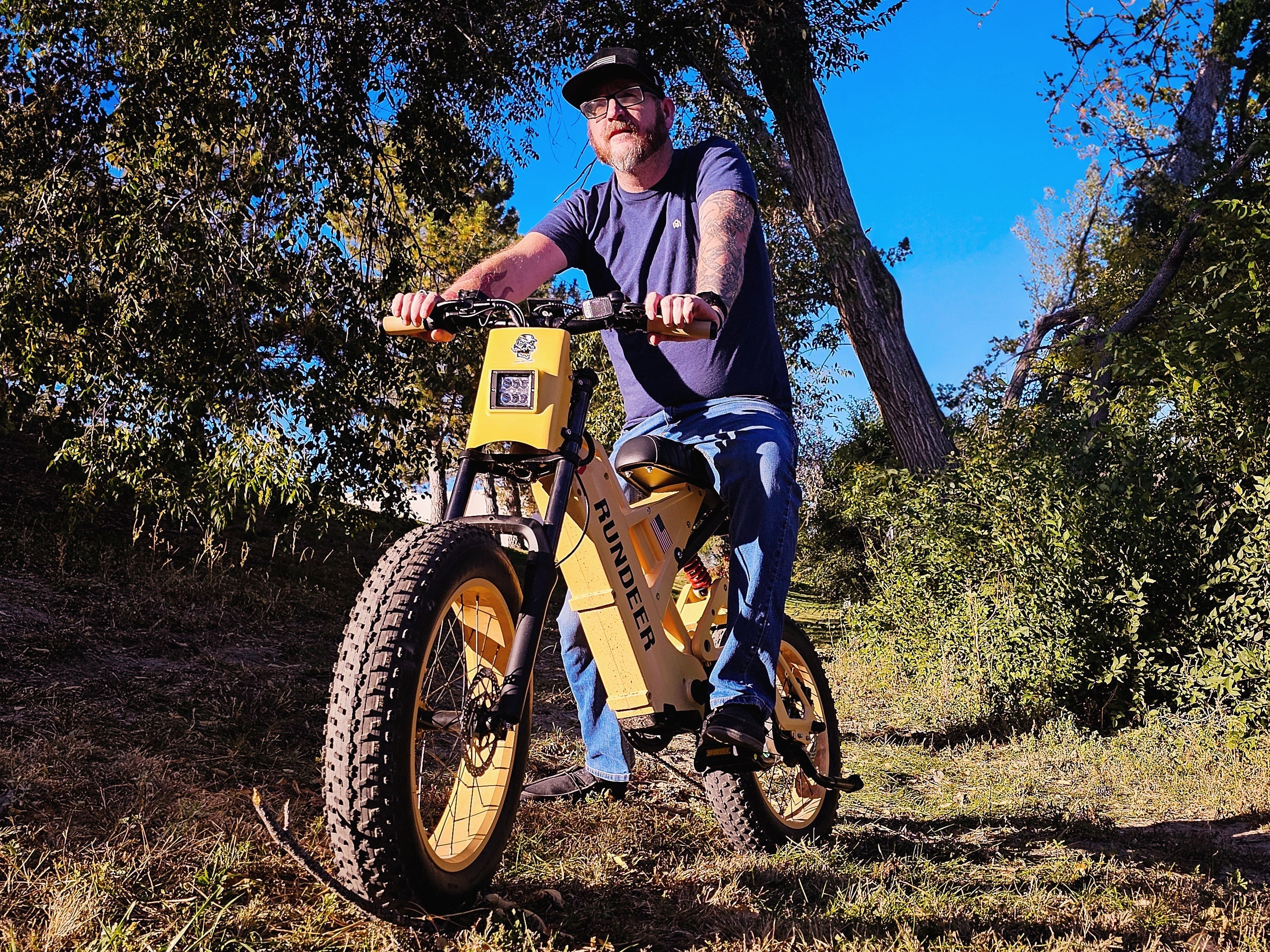Your e-bike journey starts with the frame. This is really the most important component because it has an effect on how quickly you can ride, how much steerability you have, how comfortable you are, and how long the bike will last. Most folks think about the motor and battery, but the frame material actually plays a huge role in how the bike feels. Carbon fiber and magnesium alloy are two different choices, and each of them suits different kinds of riders and riding.
Carbon Fiber vs. Magnesium Alloy: A Quick Look
Before we get into the details, here's a simple comparison of the main differences between these frame materials:
| Feature | Carbon Fiber | Magnesium Alloy |
| Weight | Extremely lightweight | Lighter than aluminum/steel, heavier than carbon |
| Stiffness | Very high, excellent power transfer | Moderate, with some natural flex |
| Vibration Dampening | Limited, can feel harsh on rough terrain | Excellent, absorbs road vibrations well |
| Durability | Susceptible to cracks from impacts | More resistant to impacts, may dent instead |
| Impact Response | May fail catastrophically when damaged | Typically dents or deforms before failing |
| Corrosion Resistance | Excellent, naturally corrosion-proof | Requires protective coating, more maintenance |
| Cost | Premium price point | More affordable, mid-range pricing |
| Best For | Performance riding, racing, lightweight priority | Comfort-oriented riding, durability needs |
Carbon Fiber: The Lightweight Champion
Carbon fiber has revolutionized e-bikes as a result of its phenomenal properties. It's literally made up of tiny carbon strands which are woven and glued together using a resin binder. It produces a frame which is incredibly robust but quite light – much better than cumbersome metal frames.

The Key Advantage: Weight Reduction
The most obvious distinction is lighter weight. Carbon fiber bikes typically weigh 20-30% less than steel or aluminum bikes. This means the e-bike becomes a lot easier to deal with. You'll climb hills faster, ride up steep hills more easily, and even see improved range on one charge because the motor doesn't have to strain as much.
Stiffness Where It Counts
Carbon fiber is also seriously stiff. This is key because it makes sure all the power from your legs and the motor goes straight to the wheels. When you really crank on the pedals, or when the motor kicks in, the bike just goes instead of feeling like it's bending and wasting your energy.
Customized Ride Feel
The cool thing is, frame designers can mess with the way the carbon fibers are laid out. That means they can make certain areas super stiff (like around the bottom bracket where the pedals attach) while allowing other parts to flex a bit for a comfier ride.
What Happens When Things Go Wrong?
Okay, so carbon fiber is amazing, but it's not perfect. It's awesome at dealing with the regular stresses of riding, but it's not a fan of sharp hits or being crushed. If you smack a rock or crash, a carbon frame might crack, while a metal one would just get a dent. Think of it as carbon fiber's weak spot.
If you do damage a carbon frame, it's not a simple fix. Little scratches might just be cosmetic, but anything deeper can mess with how strong the frame is. You'll probably need to take it to a pro for an assessment and repair.
Why the High Price?
Making these frames is a pain. It involves:
- Carefully layering the carbon sheets
- Precisely applying the resin
- Spending tons of time molding everything
- Having skilled people checking the quality
All of that adds up. You're usually looking at spending an extra $500-1500 compared to a bike with a metal frame. But for riders who really care about performance, that extra money can be worth it for the better ride and handling.
Magnesium Alloy: The Comfort-Performance Balance
Magnesium alloy frames represent a compelling middle ground in the e-bike market, offering a blend of desirable characteristics. These frames combine magnesium with small amounts of other metals, such as aluminum or zinc, resulting in a material with notable versatility.

A Lighter Choice Than Standard Metals
Magnesium alloy is about two-thirds the density of aluminum and only one-fourth the density of steel. This means you get a lighter frame compared to many metal options, and it's usually cheaper than carbon fiber. This lighter weight helps with handling and saves energy.
Better at Smoothing Out Bumps
One big plus of magnesium alloy is that it absorbs vibrations better than carbon fiber. This means you won't feel every bump in the road as much, which makes longer rides less tiring and more comfortable on different surfaces.
Great for Everyday and Fun Rides
This vibration absorption is especially helpful for people who commute in cities or ride for fun, where they often run into rough roads, potholes, or gravel. You'll really notice the difference after riding for a while, as those road vibrations can build up and make your hands, arms, and neck sore.
Tough and Holds Up Well
Magnesium alloy is also more resistant to impacts than carbon fiber. Instead of breaking completely when hit hard, it tends to bend, and you can often keep riding even after minor accidents.
Energy Absorption and Frame Integrity
The material's ductility enables it to absorb energy during impacts, potentially preventing complete frame failure and offering increased peace of mind for riders navigating challenging conditions or encountering occasional rough handling.
Advancements in Manufacturing Processes
Modern manufacturing techniques for magnesium alloy frames include:
- Injection molding for intricate designs
- Extruded tubing for standardized components
- Advanced joining methods for enhanced structural integrity
- Corrosion-resistant coatings to extend product lifespan
These advancements allow for design flexibility while maintaining reasonable production costs, increasing the accessibility of magnesium alloy e-bikes to a broader demographic of riders.
Maintenance Matters: Keeping Your Frame in Top Condition
Both frame materials require proper care to maintain performance and appearance, though their needs differ significantly.
Carbon fiber requires vigilance against structural damage. Regular inspection for cracks or deep scratches, especially around stress points like the head tube, bottom bracket, and seat stays, helps catch potential issues early. Avoid clamping carbon frames in standard bike stands that might crush the tubes – instead, secure the bike by the seatpost.
The good news? Carbon fiber doesn't corrode. It remains immune to rust and oxidation issues that plague metal frames, making it particularly suitable for wet climate riding.
Magnesium alloy demands attention to corrosion prevention. Although modern frames feature protective coatings, chips in this barrier can allow oxidation to begin. Washing your e-bike regularly (especially after riding in rain or near salt water) helps prevent corrosion. Apply a thin coat of bike-specific frame protectant once monthly in wet seasons.
Both materials benefit from careful storage. Avoid extreme temperature fluctuations and direct sunlight, which can degrade materials over time. Store your e-bike in a climate-controlled environment when possible, and use wall mounts or floor stands that support the bike appropriately.
Finding Your Perfect Match: Riding Style and Frame Selection

Different riding conditions favor different frame materials.
Carbon fiber excels when performance metrics matter most:
- Achieving maximum speed and acceleration
- Extending range through weight reduction
- Climbing challenging hills efficiently
- Racing or competitive riding
The material responds beautifully to smooth pavement and flowing trails where its responsiveness and efficiency shine brightest.
Magnesium alloy demonstrates its value in versatility scenarios:
- Daily commuting through variable conditions
- Weekend recreational rides prioritizing comfort
- Mixed terrain adventures combining pavement and light trails
- Riders seeking durability with reasonable weight
The material's forgiving nature accommodates the unexpected—whether that's a hidden pothole, an accidental drop, or simply the accumulated vibrations of daily use.
Budget considerations inevitably influence frame selection. While carbon fiber commands premium pricing, magnesium alloy delivers significant performance benefits at a more accessible price point. Determine whether the weight savings and performance edge of carbon justify the additional investment based on your specific riding goals.
Choose Your Perfect E-Bike Frame
The ideal e-bike frame material hinges on riding style, budget, and performance needs. Carbon fiber excels in lightness and responsiveness for performance enthusiasts. Magnesium alloy provides a balanced mix of comfort, durability, and affordability. You should thoroughly research material specifications and intended uses to align with their riding profile. Careful consideration ensures selecting an e-bike that perfectly suits individual needs and preferences.

